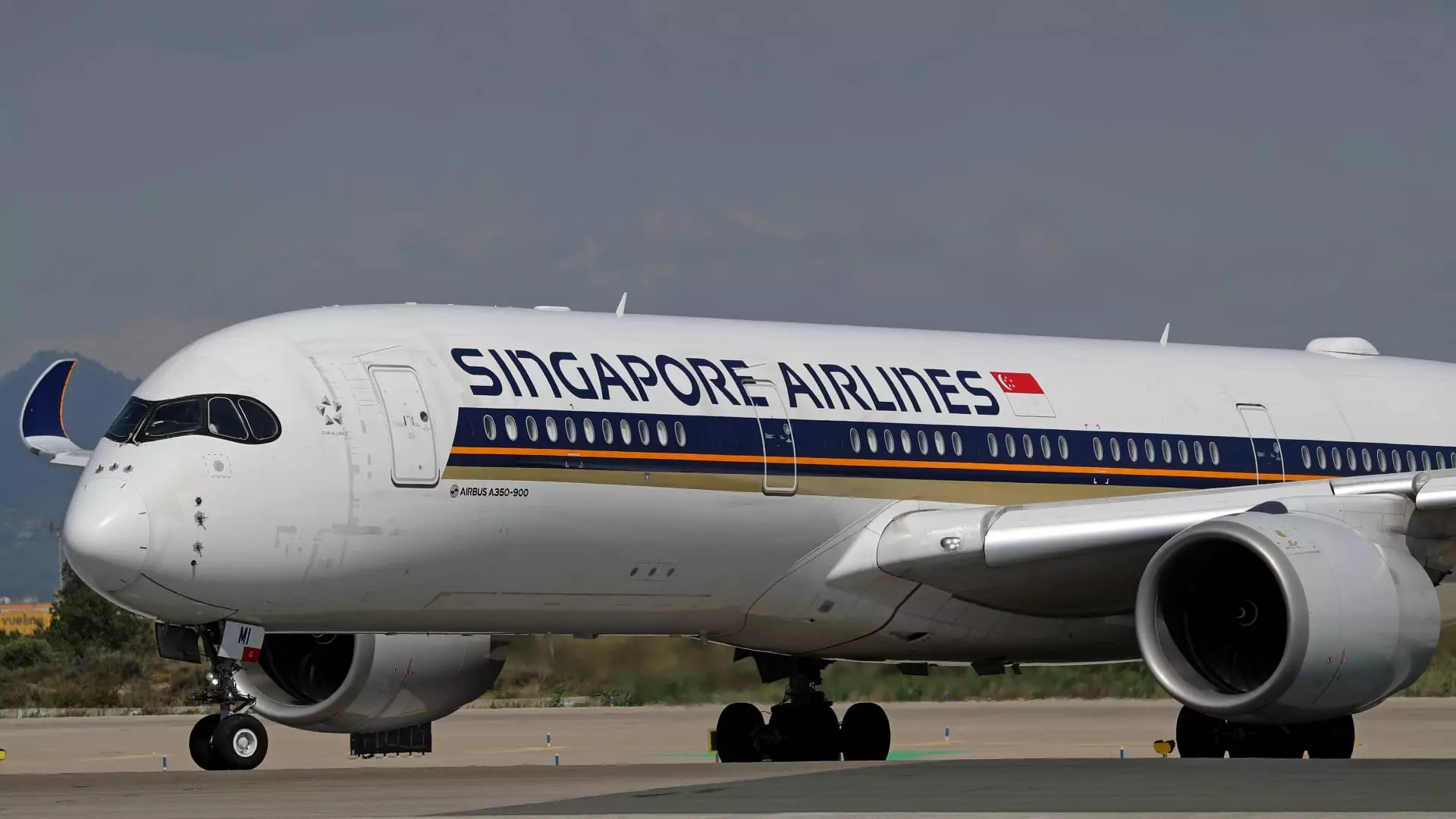Singapore Airlines has recently reported a stark decline in its net profit for the first half of the fiscal year, triggering a noticeable reaction in the stock market. The flag carrier’s net profit plummeted nearly 50%, coming in at 742 million Singapore dollars (approximately $559.12 million). This figure marks a significant drop from the SG$1.44 billion earned during the same period last year. Notably, these results emerged against a backdrop of increased capacity and heightened competition, which have strained the financial performance of the airline.
As trading commenced on Monday, the company’s stock experienced a sharp decline, initially dropping by 6.2% before rebounding slightly to close 3.57% lower than the previous trading day. The operating profit also mirrored this downturn, falling by 48.8% to SG$796 million from SG$1.55 billion a year ago. However, it is worth noting that despite the profit decline, revenue rose by 3.7%, reaching SG$9.5 billion, indicating that while Singapore Airlines is generating more revenue, it is simultaneously struggling with cost management and yield pressure.
The airline attributed its profit decline to several factors, including a surge in competitors reclaiming their pre-pandemic capacity status and an increase in available seats in key markets. This scenario has culminated in a competitive environment that has placed downward pressure on ticket prices, leading to lower yields. During a recent earnings briefing, SIA’s Chief Commercial Officer, Lee Lik Hsin, emphasized the fierce competition globally, reiterating that the return of capacity among competitors complicates efforts to maintain profitability.
Even with a dip in operational profit, Singapore Airlines opted to sustain an interim dividend of 10 Singapore cents per share. This decision reflects the airline’s commitment to maintaining shareholder confidence despite the market challenges. Despite facing a 2.4 percentage point decline in passenger load factor, dropping to 86.4%, the airline’s overall passenger traffic grew by 7.9% year-on-year, albeit at a rate slower than its capacity expansion of 11%.
Looking ahead, Singapore Airlines remains resilient and continues to emphasize its growth strategy. Lee noted that the airline will not shy away from expanding its capacity despite fierce market competition. This reflects a long-standing approach by Singapore Airlines to invest in growth while adapting to market dynamics. The company aims to strategically allocate its resources to ensure optimal utilization, even as the challenging operating landscape persists.
Expectations for the second half of the fiscal year indicate that demand for air travel will remain strong; however, the competitive pressures will likely continue unabated. In anticipation of future customer needs, Singapore Airlines has recently unveiled a comprehensive SG$1.1 billion cabin retrofit initiative for its 41 long-range and ultra-long-range Airbus A350 jets. Set to commence in 2026 and conclude by 2030, this retrofitting program signifies the airline’s commitment to enhancing its customer experience and modernizing its fleet amidst evolving market demands.
Singapore Airlines is navigating a complicated terrain shaped by competitive pressures and operational challenges. While short-term performance appears subdued, the airline’s strategic planning and commitment to growth may help it reclaim its path to profitability in the years to come.


Napsat komentář